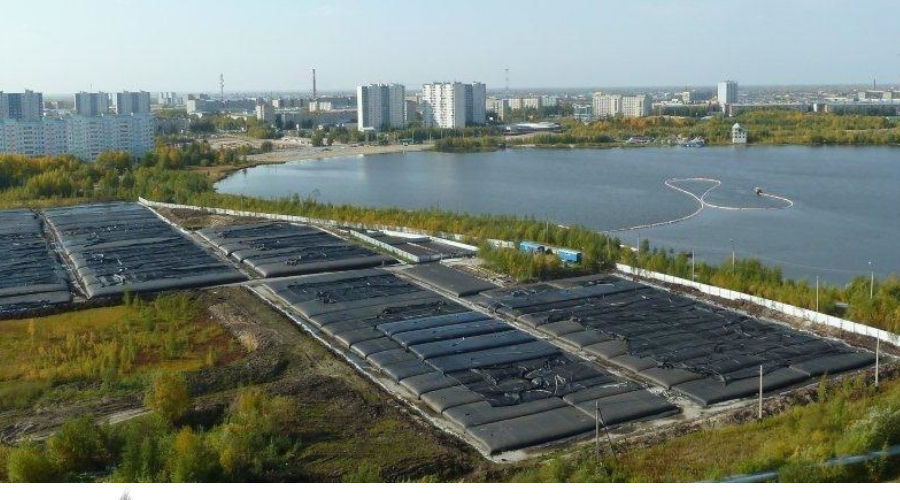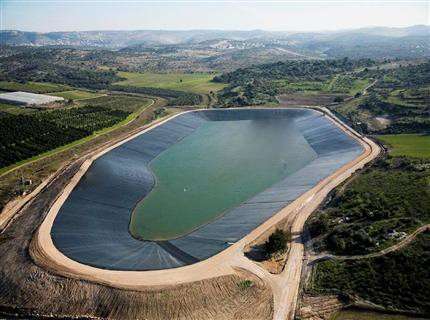
Blog

Jun 8,2023
What are Geo Tubes, and How are they more advantageous compared to the traditional erosion control method?
Geo Tubes are an innovative solution for controlling coastal erosion, water management, and flood mitigation. They are composed of permeable fabric and filled with sand or soil, creating a durable and flexible barrier to protect against the impacts of natural forces such as wind, waves, and storms. Geo Tubes have been widely used in various applications, including saving beaches, dunes, shorelines, and river banks.
What are Geo Tubes, and how do they work?
Geo Tubes are large tubes of absorbent fabric, typically made of synthetic materials such as polypropylene. They are filled with sand or soil to create a barrier that can withstand the forces of wind, waves, and storms. The permeable geotextile allows water to pass through by reducing the pressure on the wall to prevent damage and erosion. This combination of permeability and strength makes Geo Tubes an effective solution for controlling coastal erosion and water resources.
Installation
The process of installing Geo Tubes is quite simple. The tubes are usually filled with sand or soil on site and then placed in a trench along the shoreline or riverbank. The channel secures the lines in place and protects them from damage. After placing the tubes, they are covered with more sand or soil to create a natural-looking barrier by blending in with the surrounding landscape.
Maintenance
Geo Tubes are versatility and cost-effective due to their sustainability. They are not only easy to install but incur very few expenses for maintenance, and they are less expensive than traditional erosion control structures. Over time, when the sand or soil inside the tubes settled or washed away, this is easily remedied by refilling the boxes with additional material. Geo Tubes is a practical and cost-effective solution for controlling coastal erosion and managing water resources.
Advantages of Geo Tubes Over Traditional Erosion Control Methods

Coastal erosion is a growing problem worldwide, and finding practical solutions is becoming increasingly crucial. Traditional erosion control methods such as concrete walls, bulkheads, and jetties were used to protect coastal areas from the impact of wind, waves, and storms. However, these complex erosion control structures have disadvantages, including high costs, environmental impacts, and limited versatility.
Geo Tubes are an innovative solution offering several advantages over traditional erosion control methods. Geo Tubes are large tubes made of absorbent fabric, typically made of synthetic materials such as polypropylene, filled with sand or soil to create a barrier that can withstand the forces of wind, waves, and storms.
So, what are the advantages of Geo Tubes over traditional erosion control methods?
Geo Tubes are more environmentally-friendly, unlike concrete walls and bulkheads. This ensures that Geo Tubes is a more sustainable solution that will continue to provide benefits for years.
Geo Tubes are more versatile than traditional erosion control methods. They serve various purposes in different environments, including protecting beaches, dunes, shorelines, and river banks. They also create new wetlands or other habitats that benefit wildlife and the environment.
Geo Tubes are also more flexible than traditional erosion control methods. Their permeable fabric allows them to move and bend with the forces of wind, waves, and storms, ensuring the barrier remains effective over time. Concrete walls and bulkheads are rigid structures in comparison and are more likely to crack or break under the stress of natural forces.
Geo Tubes can be custom-designed to meet the specific needs of the project. The size, shape, and materials used in the construction of Geo Tubes are adjustable to meet the requirements of each application.
Geo tubes are used with other erosion control solutions, such as breakwaters, jetties, and revetments, to provide a comprehensive solution for controlling coastal erosion and managing water resources.
SOME ADDITIONAL BENEFITS
Geo tubes provide many benefits to communities beyond erosion control. For example, they can create new recreation areas, such as beaches, parks, or fishing piers, that provide opportunities for residents and visitors to enjoy the coastal environment. It can help to attract new investment and development, providing a boost to the local economy.
Like the Geo membrane, they are also used to improve water quality by filtering out pollutants and reducing the risk of contamination from runoff. By reducing the risk of damage from erosion, Geo tubes enable us to protect the infrastructure and property values and ensure that our businesses and homes remain safe and secure.
Unlike concrete wall sand bulkheads, Geo Tubes do not harm marine life. Geo Tubes do not create barriers to restrict the movement of wildlife or develop areas of stagnant water that will become breeding grounds for unhealthy organisms. This ensures the coastal environment is protected and wildlife and habitats are preserved.







